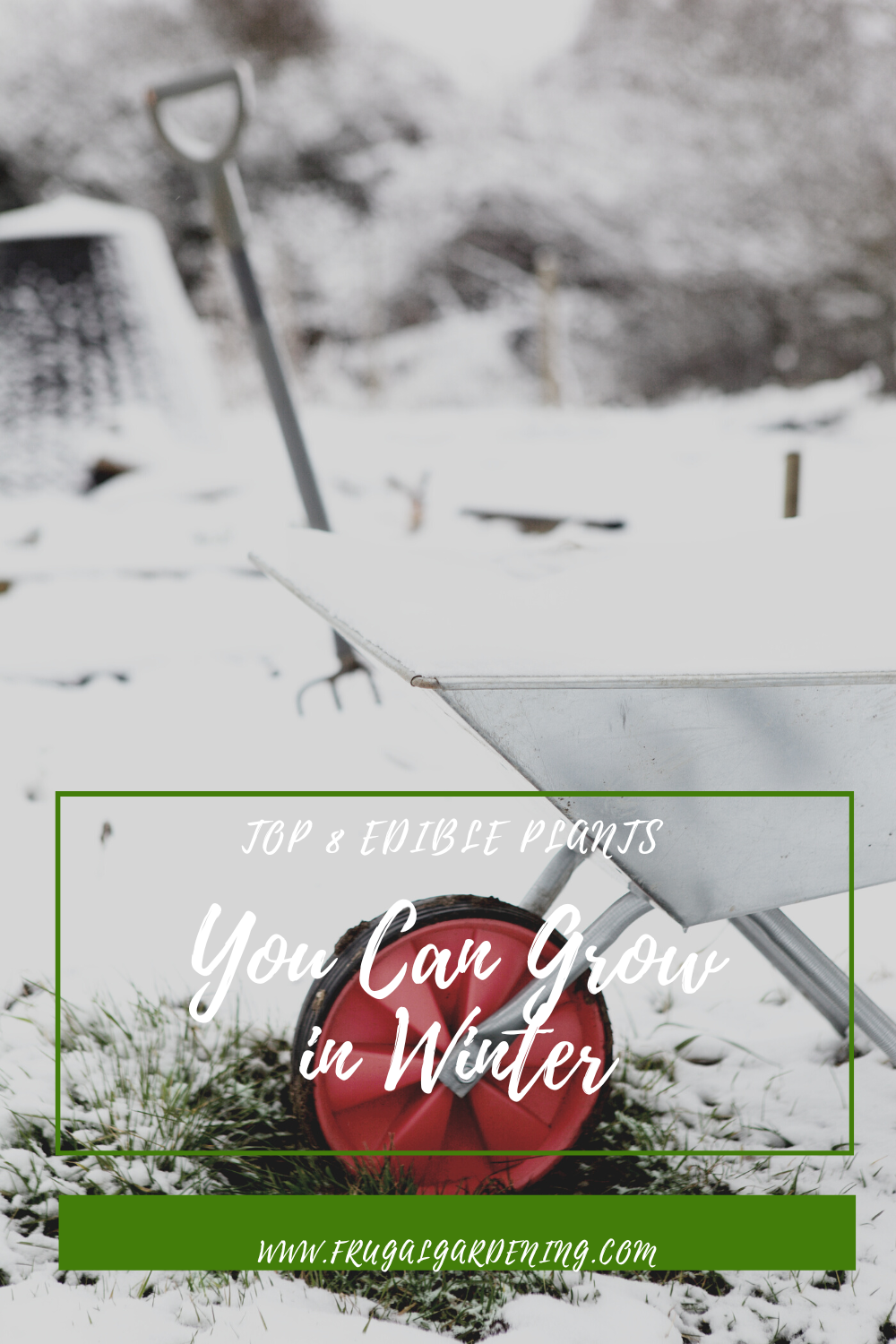
When temperatures start to drop, many people think gardening has to stop. That’s not true. Here are the top 8 edible plants you can grow in winter.
Tons of edible plants can survive winter temperatures, rain, and poor soil drainage conditions. And purple varieties, in particular, contain a compound (anthocyanin) that helps prevent root rot in wet soils.
Below, I have divided the vegetables into ultra-hardy and semi-hardy categories. Ultra-hardy plants can survive heavy frosts and temperatures below 28℉. Semi-hardy plants can survive light frosts and temperatures between 28-32℉.
Ultra-Hard Vegetables
Spinach – Growing spinach in the winter may result in sweeter leaves. This is because the plant produces more sugar and stores it in the vascular network in the leaves. It keeps the plant from experiencing freeze damage.
Garlic – Garlic is more adapted to cold weather, so fall-planted crops need much less care than spring-planted crops. The bulbs also grow bigger since the soil conditions are optimum. Also, choose hardneck varieties as they do better in the winter than softneck varieties.
Rhubarb – Rhubarb is a cold-loving plant and doesn’t grow well in warmer temperatures. In fact, temperatures must be under 40℉ for the perennial to come out of its dormancy. Also, only the leaf stalks of the plant are edible, so don’t eat the leaves.
Austrian Winter Pea – Easy to grow in large quantities, you can cut off young shoots for salads and stirfry or wait until they develop pods around springtime. And these peas are nitrogen fixers which means they can use nitrogen from the air to produce nitrogen compounds that increase nitrogen levels in the soil.
Semi-Hard Veggies
Beets – Beets will go to seed if the temperatures get too cold, so do your best to harvest them before hard frosts (under 28℉). However, growing your beets in cooler temperatures of fall and winter will result in sweeter beets because the roots store sugar to help prevent freeze damage.
Parsnip – Parsnips are another vegetable that gets sweeter when left in the soil over winter. And it is easiest to grow them from seed, but the seeds do not germinate well if they are more than a year old, so get fresh seeds every year.
Lettuce – Lettuces come in wide varieties and colors, so you can probably find tasty varieties that you can grow in your winter climate. Many gardeners use cold frames or hoop houses to negate the slower growth rate of winter.
Cabbage – Cabbage is a cool weather crop which means it does well in cool weather, but if you want to grow it in a frigid climate, you may need to add some protection from the cold like mulch, covering the heads, or a cold frame or hoop house.
Conclusion
Because temperatures are low and the sunlight is limited, growing winter gardens means your plants will show a slower growth rate than growing these plants in the spring or fall. Be patient and consistent, and spring could bring a sweet harvest!
These were the top 8 edible plants you can grow in winter. What do you like to grow in the winter? Leave me a comment below to start a conversation!

Ali is a homeschooling mom of 5 who includes gardening and food prep as important subjects in her school. She has been raising plants her whole life and learned how to garden from her father. When she isn’t caring for her plants, she can be found reading or hiking.
Leave a Reply